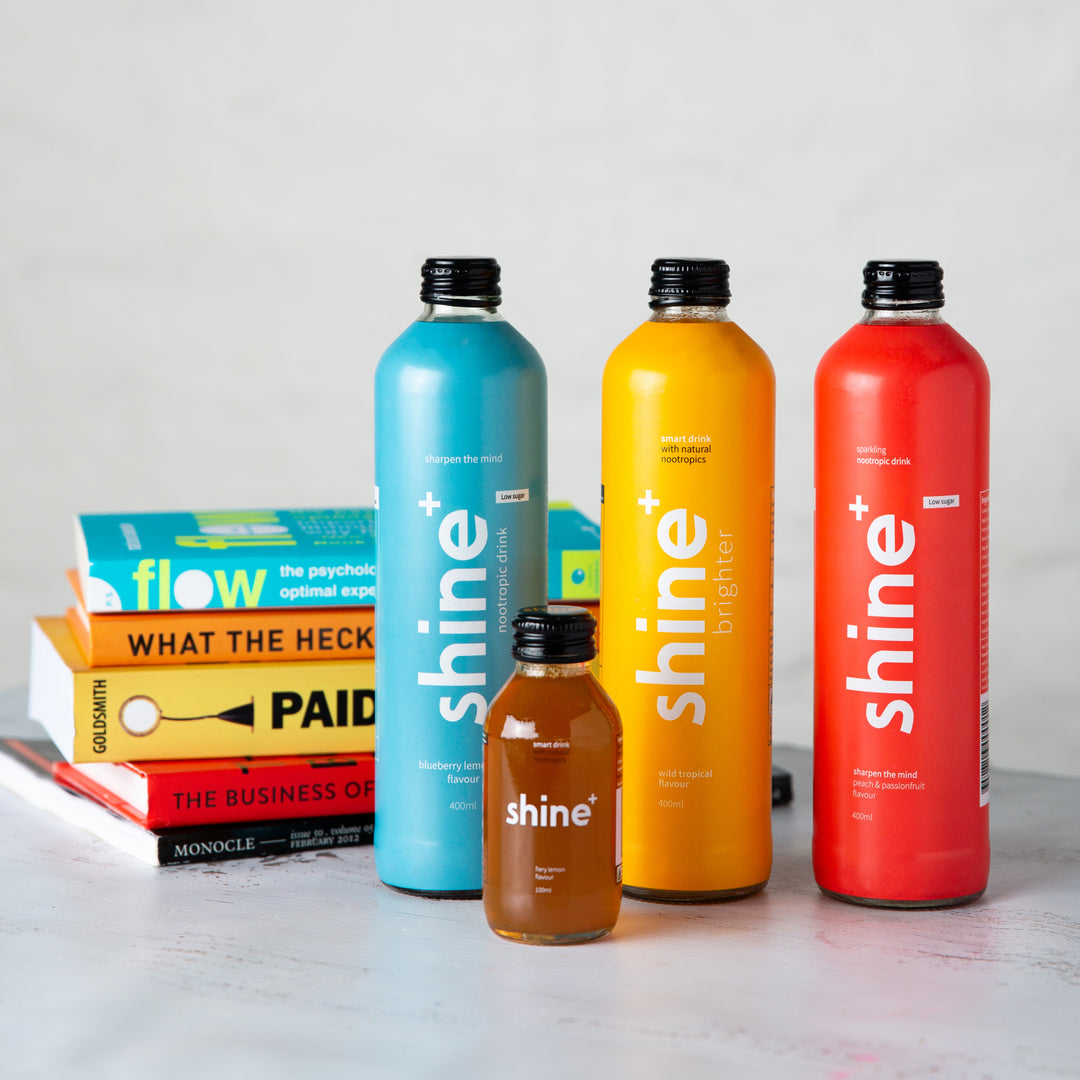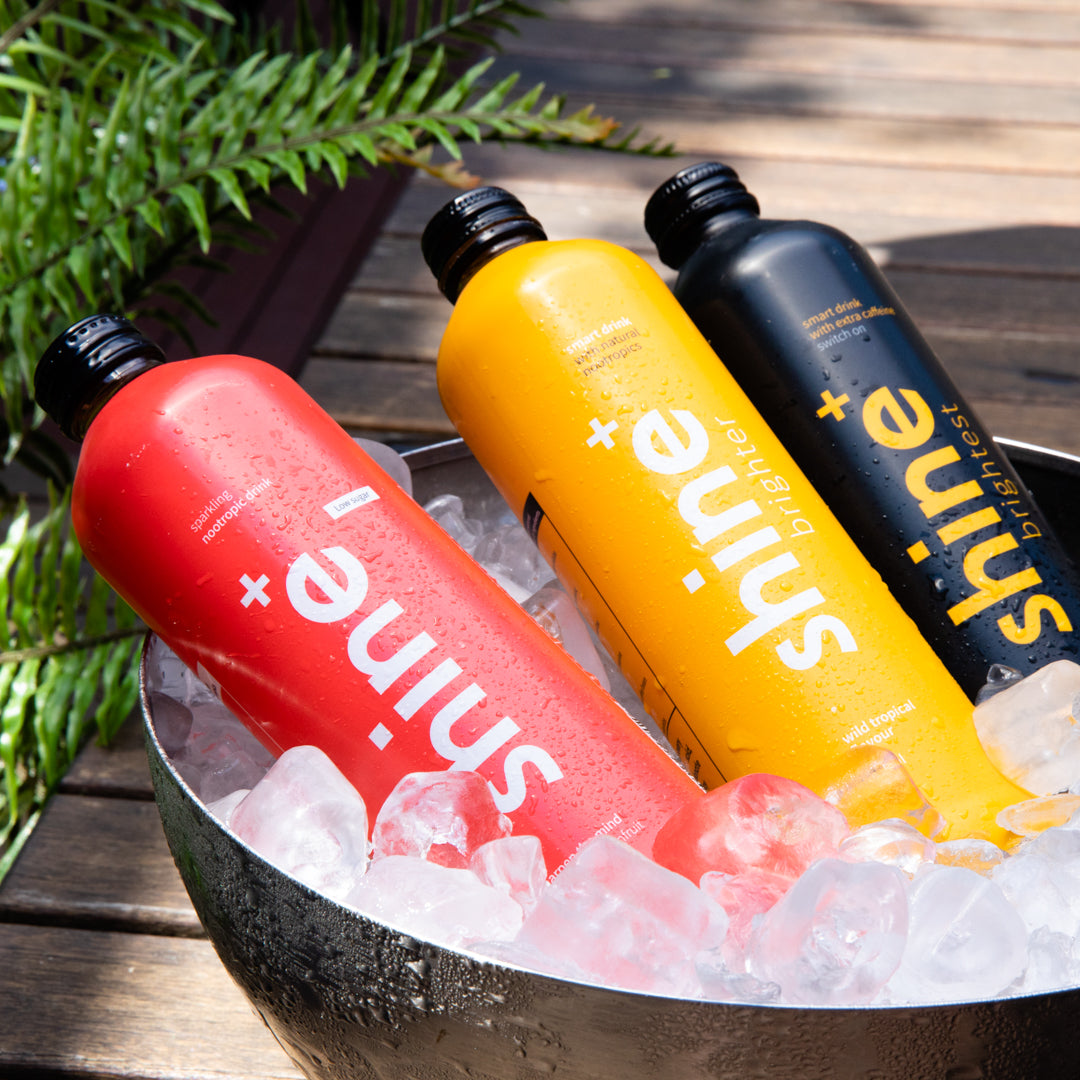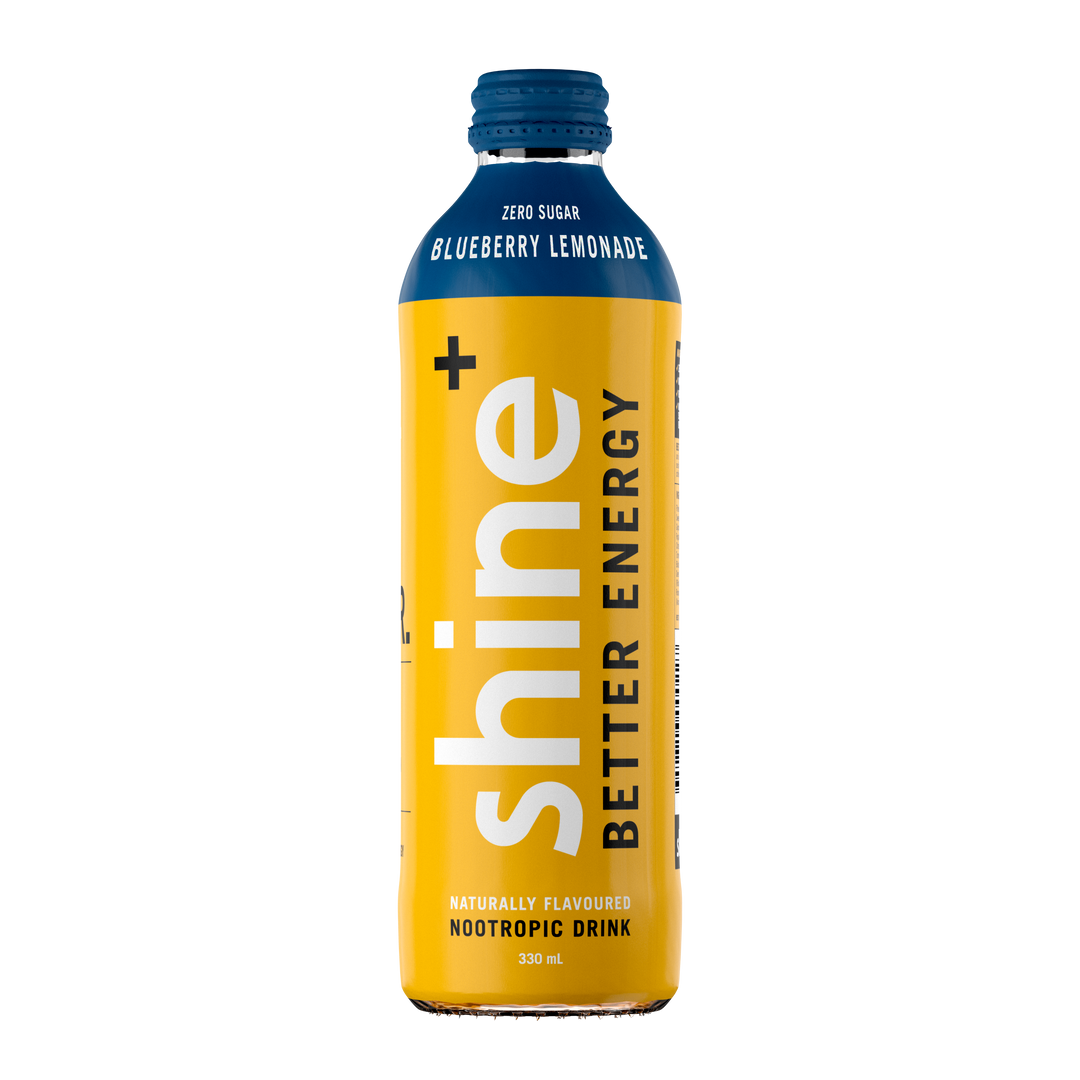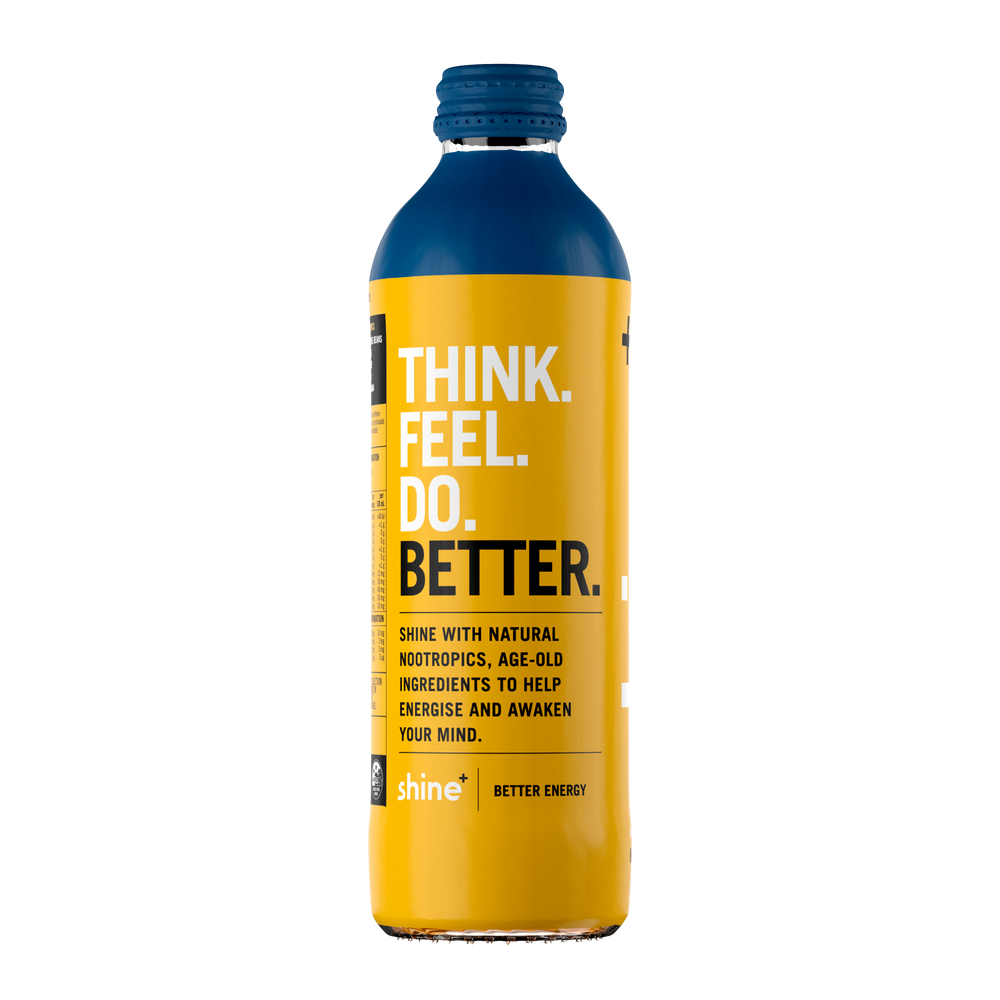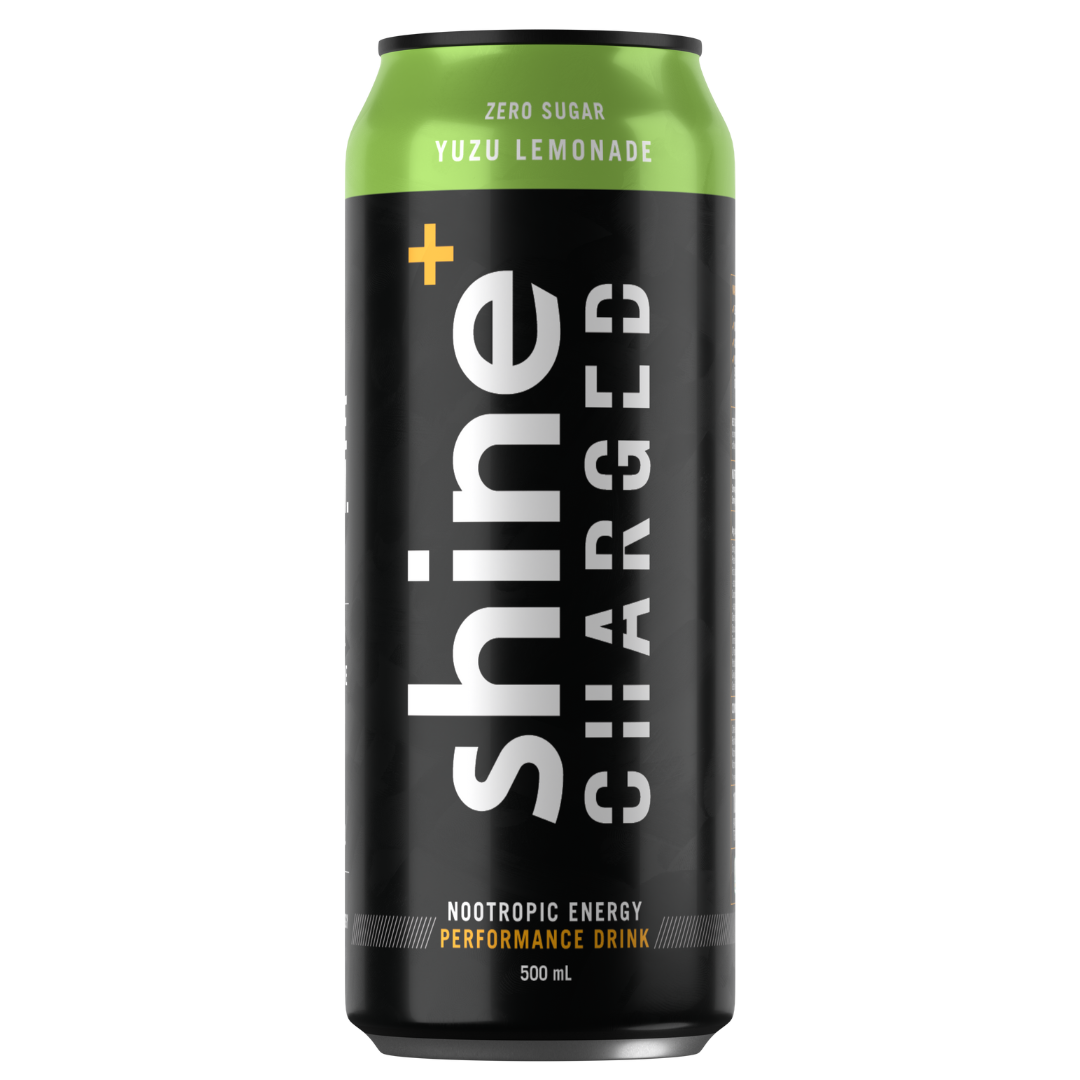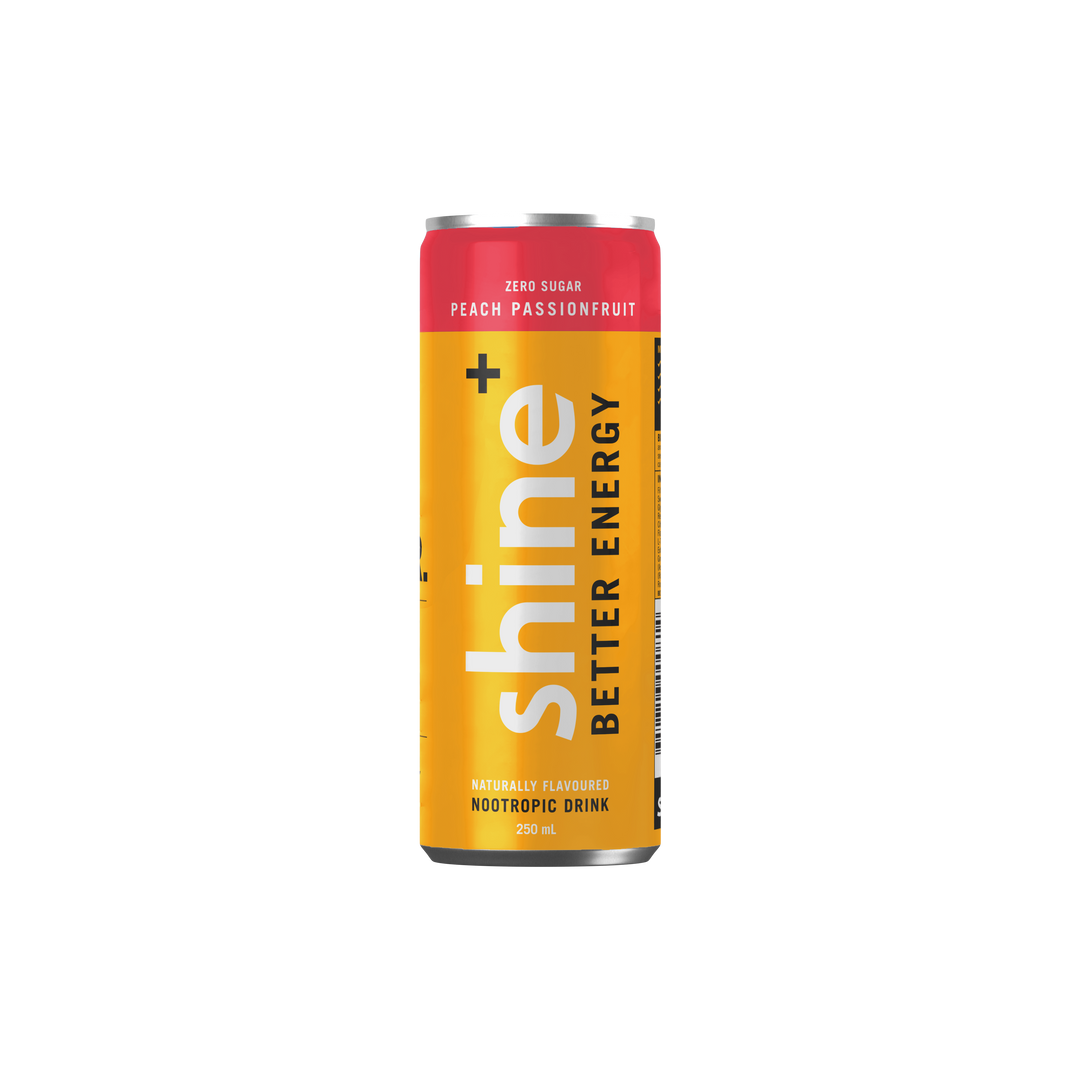EVERYTHING YOU NEED TO KNOW ABOUT CAFFEINE
Whether it's from drinking tea, coffee, or soft drinks, you’ve consumed caffeine in some shape or form over your lifetime. After all, it is the world’s most widely consumed psychoactive drug. From 9-5 office jobs to night shifts, many works traditionally pick up a coffee in the morning to get an energy boost.
In this sense, caffeine has become a staple and a dependence. Whether it be in school or work, some people believe they need caffeine to not only survive but to even perform adequately in their environment. Does caffeine really give you that boost? How is it used to its fullest potential in shine+? Let’s take a closer examination into caffeine, and how it can affect your world.
From ancient roots to everyday use
Out of all the ingredients featured in shine+, caffeine has one of the longest documented histories behind it -- rivalled only by Ginkgo biloba. The first traces of caffeine consumption go back to 3000 BC, where the Chinese emperor Shennong allegedly discovered tea accidentally by combining leaves with boiling water (Evans 1992, p. 2). The emperor noted that this concoction had restorative properties -- this being the result of the caffeine from the leaves within the tea.
Some, however, treat the story of the emperor’s discovery as more of a legend than a history. The first evidence of caffeine consumption and knowledge comes from Arabia in the 15th century, where coffee trees were cultivated and spread across Arabia and North Africa (Bealer & Weinberg 2001, pp. 3-4). Coffee would eventually spread from the Middle East and Africa up to Europe -- first to Italy, and then eventually the rest of the continent. We can see the Middle Eastern and African connection to this day, with the continual importation of coffee beans from these regions.
Today, caffeine is a common feature within five products: coffee, tea, soft drinks, energy drinks, and chocolate. While coffee and tea had their early roots in the Middle East and Asia respectively, chocolate had its origins in cocoa bean consumption in Central America, among civilisations such as the Mayans. Cocoa beans were not only a food for consumption but also used as currency in these ancient societies (Wood 2001, p. 2).
That kick of energy you need
As mentioned before, it is a popular practice for people to pick up a coffee before they start their day. While many know that caffeine does provide this energy boost, most wouldn’t know how exactly it achieves this. Caffeine is not only a brain stimulant, but it blocks receptors for adenosine. Adenosine usually prevents the release of excitatory brain chemicals. Since caffeine is blocking these receptors, these chemicals can flow freely, which causes the surge of energy that you feel when you consume caffeine.
There is more to what caffeine provides than just an energy boost. Some researchers have suggested that caffeine is believed to impact mood and performance through its blocking of not only adenosine transmitters but also benzodiazepine receptors (Ruxton 2008, p. 16). Benzodiazepine is another neurotransmitter, which slows brain activity. Caffeine has been shown to enhance alertness, hedonic tone and increase focus and concentration by shutting out distractions (Nehlig 2010, p. 88).
Another study has highlighted that caffeine’s psychological effects are responsible for energy and cognitive skills (Cappelletti et al. 2015, p. 83). The extent of caffeine’s cognitive impact has been explored in double-blind trials 2014, which suggest that memory was significantly impacted. The study showed that more members of the group who consumed caffeine were able to correctly identify a series of images compared to the placebo group. While it has been suggested by the researchers that memory enhancements are likely caused by caffeine’s interactions with the hippocampus -- the centre for all short and long-term memories in the brain -- this claim is still under investigation.
Want to learn more of shine+'s other ingredients?
Everything you need to know about Siberian Ginseng
Helping you shine brighter
With all the benefits that caffeine provides, it becomes easy to understand why it is a staple ingredient in shine+. But wait -- doesn’t caffeine also lead to huge energy crashes? Caffeine, despite all its benefits, is also a vasoconstrictor, meaning it reduces blood flow and increases heart rate. Often this can be coupled with dehydration, especially if your form of caffeine intake is through soft drinks or energy drinks, and these factors will combine and eventually exhaust your body and mind as the day continues. This is often why the last hours of a work day might be a struggle if you’ve consumed caffeine early: you are beginning to feel the effects of this constriction on blood vessels and blood flow.
However, with shine+ this isn’t a problem you should experience. shine+ features the combination of caffeine with L-theanine, an amino acid commonly used in green tea. L-theanine increases brain levels of GABA, a relaxing and calming neurotransmitter. When combined with caffeine, it removes the negative effects of caffeine such as the reduced blood flow, smoothing out the process that caffeine takes on the body while maintaining the positive effects (Nathan et al. 2006). This ensures that, while drinking shine+, you can have the increased energy and alertness from caffeine, without the nasty crashes that come later in the day.
As we can see, caffeine can do the world of good for you, providing energy, focus, and cognitive benefits. If you want your dose of caffeine without the crashes of energy, pick up some shine+ today.
WORDS BY HAYDEN FITZGERALD
References
- Bealer, B., Weinberg, B., (2001), The World of Caffeine: The Science and Culture of the World’s Most Popular Drug. Routledge
- Cappelletti, S. et al., (2015), Caffeine: Cognitive and Physical Performance Enhancer or Psychoactive Drug? Curr Neuropharmacol 13 (1), pp. 71-88
- Evans, J., (1992), Tea in China: The History of China’s National Drink. Greenwood Press
- Food Hacks Daily (2014), Avoid Caffeine Crashes, No Matter What Kind of Coffee Drinker You Are, <https://food-hacks.wonderhowto.com/how-to/avoid-caffeine-crashes-no-matter-what-kind-coffee-drinker-you-are-0156146/>
- Harvard Medical School (2014), Caffeine and a healthy diet may boost memory, thinking skills; alcohol’s effect uncertain, <http://www.health.harvard.edu/blog/caffeine-healthy-diet-may-boost-memory-thinking-skills-alcohols-effect-uncertain-201406187219>
- John Hopkins University (2014), Caffeine has positive effect on memory, Johns Hopkins researchers say, <http://hub.jhu.edu/2014/01/12/caffeine-enhances-memory/>
- Nathan, PJ., Lu, K., Oliver, C., (2006), The neuropharmacology of L-theanine: a possible neuroprotective and cognitive enhancing agent. J Herb Pharmacother 6 (2), pp. 21-30
- Nehlig, A., (2010), Is Caffeine a Cognitive Enhancer? Journal of Alzheimer’s Disease 20, pp. 85-94
- Pill Scout (2014), Why Theanine + Caffeine is perfect for nootropics newbies, <http://www.pillscout.com/nootropics/theanine-caffeine-perfect-nootropics-newbies/#How_do_theanine_and_caffeine_work_as_a_nootropic>
- Ruxton, C., (2008), The impact of caffeine on mood, cognitive function, performance and hydration: a review of benefits and risks. Nutrition Bulletin 33 (1), pp. 15-25
- Wood, G., (2001), Cocoa, Oxford.


